Something went wrong!
Hang in there while we get back on track
Best attractions in Trieste
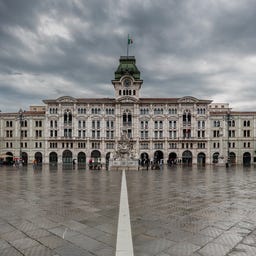
Visiting the main square, the largest square in Europe with open access to the sea, is a must in Trieste. Don't be surprised if the architecture reminds you of Vienna. Trieste was part of Austria until 1918, and the elegant palaces are built in the same architectural style as the Viennese Ringstrasse.

Situated majestically above the Adriatic Sea, the elegant Castello Miramare impresses with fantastic views. Visit the interior to gain truly surprising insights into the life of Archduke Maximilian. Here, you will learn more about Maximilian's dramatic downfall in Mexico and see his unique interior design. On the terrace right by the sea, you will be rewarded with fantastic photos, and the extensive, enchanting gardens invite you to linger.

High up on a hill, the Castello offers the best panoramic view over the rooftops of Trieste. The medieval castle from the 16th century has its roots in ancient Roman times. The castle museum showcases a beautiful weapons collection and offers interesting insights into the Roman and military history of the city.
How much time is needed? Plan for half a day to climb and visit the Castello and the Cathedral of Trieste.
Upon entering through the gate, look to the left: Here stand the original Moors Mikeze and Jakeze, who once adorned the town hall.
Tip: The castle is about a 30-minute walk from the old town. Those looking to save energy can use the elevator in the parking garage in the old town to get directly to the hill.

The Risiera di San Sabba in Trieste was the only Nazi concentration camp on Italian soil with a crematorium. From 1943 to 1945, the former rice husking factory served as a police detention center, through which over 1,450 Jewish prisoners and numerous political detainees passed - most of whom were murdered here or deported to extermination camps like Auschwitz.

The Canale Grande in Trieste, built in 1754, is small compared to Venice's famous canal at only 300 meters long, but still charming. Originally, it was intended for ships to sail directly into the city. Today, surrounded by historic buildings, the canal is a wonderful place for a stroll. The pedestrian bridge Passaggio Joyce is particularly popular for photos.

The Molo Audace is a historic pier located on the sea shore of Trieste, just steps from Piazza Unità d'Italia and the Grand Canal. Originally constructed in the mid-18th century using the wreck of the Austrian vessel San Carlo, it has been extended over the years to its current length of 246 meters. Today, the pier serves as a popular spot for leisurely walks and offers stunning views of the seafront and the city. It is also a traditional meeting place for couples, who often share a kiss at the end of the pier.

The Cathedral of San Giusto in Trieste is located on the hill of the same name and is a beautiful example of Romanesque-Gothic architecture. The beautiful rose window and the impressive apse mosaics, depicting scenes from the lives of Christ and the Virgin Mary, make the church one of the city's most beautiful sights. You can also climb the bell tower for lovely views, but the view from the adjacent castle is much nicer.

The Revoltella Museum, founded by Baron Pasquale Revoltella in 1872, showcases 19th and 20th-century art. Housed in a historic palace with a modern extension designed by Carlo Scarpa, the museum offers a wonderful collection of Italian and European masterpieces.

High above the Gulf of Trieste stands the Santuario Mariano di Monte Grisa, an impressive example of brutalist architecture from the 1960s. The distinctive church building, whose triangular shape represents the letter "M" for Mary, was designed by Antonio Guacci and is rooted in a vow made by Bishop Antonio Santin for the protection of Trieste during World War II.

Piazza della Borsa, a significant square in Trieste, is a vibrant hub known as the city's "second living room." Once the economic center in the 19th century, it houses the neoclassical Old Stock Exchange and features notable landmarks like the Leopold I column and the Art Nouveau Bartoli house. Recently the square was pedestrianized. Since it's in the historic centre, you'll have no trouble seeing it on your way to/from the Canal Grande.
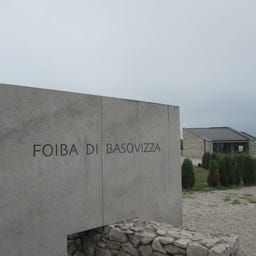
The Foiba di Basovizza near Trieste is a poignant memorial for the victims of the Yugoslav massacres after World War II. Originally established as a coal mine in the early 20th century, this 228-meter deep shaft became an execution site and mass grave for numerous Italian and German civilians and military personnel in 1945.
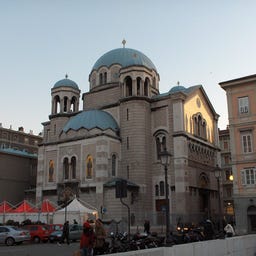
The Serbian Orthodox Church on the Grand Canal in Trieste impresses with its neo-Byzantine architecture, featuring a high dome, four bell towers, and intricate mosaics on the facade. This magnificent building, designed by Carlo Maciachini, was constructed between 1868 and 1885, replacing an earlier structure from the 18th century.
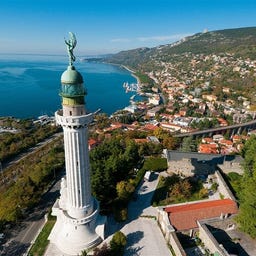
The Lighthouse of Victory (Faro della Vittoria) in Trieste is a remarkable monument built between 1923 and 1927 by architect Arduino Berlam. It serves a dual purpose as both a navigational aid, illuminating the Gulf of Trieste, and a commemorative monument honoring fallen sailors of World War I. Located on Poggio di Gretta, 60 meters above sea level, it features a majestic bronze statue of winged Victoria and an imposing column topped with a lantern. Visitors can explore the first terrace of this historic lighthouse, which offers fantastic panoramic views of the surrounding area.
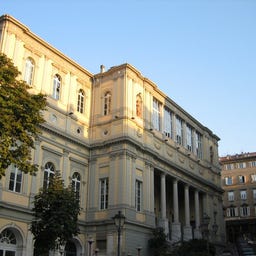
In the elegant Politeama Rossetti, the most important theater in Trieste, you can expect an impressive blend of culture and architecture. Designed by architect Nicolò Bruno, the building captivates with its eclectic style featuring Neorenaissance elements and has a remarkable technical feature: its dome could be opened on summer evenings.

The Teatro Verdi, which opened in 1801, is the most important opera house in Trieste and impresses with its neoclassical architecture designed by Gian Antonio Selva and Matteo Pertsch. With around 1,300 seats, the venue, originally founded as the "Teatro Nuovo," still regularly hosts opera performances and cultural events today.
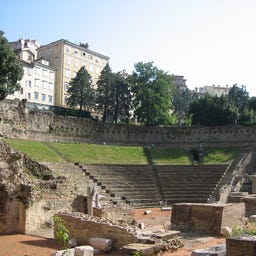
At the foot of the hill San Giusto, you discover one of the best-preserved Roman theaters north of the Adriatic, commissioned at the end of the 1st century BC by Quinto Petronio Modesto.
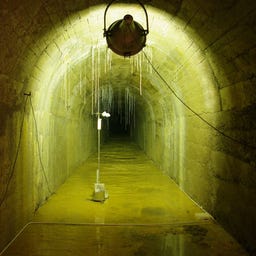
Kleines Berlin, or 'Little Berlin,' is a fascinating underground complex of World War II air-raid tunnels in Trieste. Managed by passionate volunteers, tours are available every last Friday of the month, though special arrangements can be made. For only 5 EUR, visitors can explore these historically rich tunnels, learning about Trieste's wartime history, German occupation, and speleology. The tunnels were constructed by the Germans after annexing Trieste in 1943, using three different companies to ensure secrecy. They served as an air-raid shelter for German soldiers and civil employees, with separate sectors for Italian and German use. This unique experience is highly recommended for history enthusiasts.
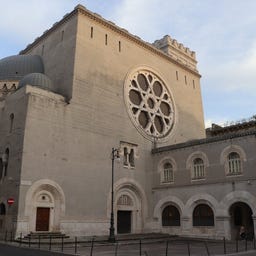
The Sinagoga di Trieste, inaugurated in 1912, is the second largest Jewish place of worship in Europe after the Great Synagogue of Budapest. Designed by architects Ruggero and Arduino Berlam, this monumental building impresses with its three facades featuring Star of David rosettes and oriental design elements. Inside, you will find a three-nave hall with a golden mosaic ceiling, while the floor is adorned with black-and-white mosaics. After a dark period during World War II, when the Nazis misused the building as a storage place for stolen artworks, the synagogue now serves once again as a spiritual center for the Jewish community of Trieste.
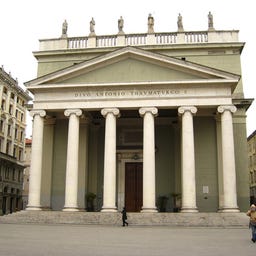
The impressive Chiesa di Sant'Antonio Nuovo has been a defining feature of the cityscape along the Canal Grande in the heart of Trieste since 1849. This neoclassical building, designed by the Swiss architect Pietro Nobile, replaced a baroque church from the 18th century that had become too small. It captivates with its striking façade, adorned with six Ionic columns and an equal number of saint statues by the sculptor Francesco Bosa.
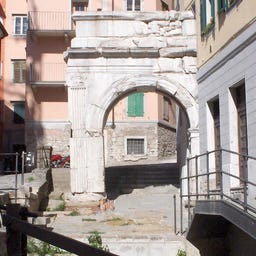
The Arco di Riccardo is one of the best-preserved Roman city gates in Trieste and was built in the 1st century BC under Emperor Augustus. The 7.2-meter-high archway took on its current form between 50 and 75 AD and impresses with its simple elegance, featuring Corinthian column capitals and a coffered ceiling.
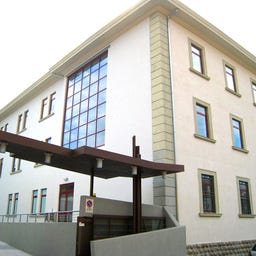
At the Museum of Natural History in Trieste, which has been located in a former barracks since 2010, you will find one of the most significant scientific collections in Italy, featuring over two million exhibits. Here, you can admire "Carlotta" - the largest mounted great white shark in Europe, measuring 5.4 meters long - and "Antonio," a nearly complete 75-million-year-old dinosaur skeleton.

The impressive Chiesa di Santa Maria Maggiore stands at the foot of the San Giusto hill in the historic center of Trieste and is considered the most important Baroque church in the city. Initiated by the Jesuits, construction of the church began in 1627, but it was not consecrated until 1682. Its distinctive dome, adorned with frescoes of the four Evangelists by Giuseppe Bernardino Bison, was only added in 1817. Inside, the three-nave structure with a Latin cross layout impresses with a magnificent main altar, created between 1672 and 1717, and decorated with marble statues of significant saints. Today, the church, which has been cared for by Franciscans since 1922, serves as a parish church and was granted the status of a diocesan sanctuary in 2011.

The Chiesa di San Nicolò is a Greek Orthodox church in Trieste, built between 1784 and 1787 for the growing Greek trading community. The architect Matteo Pertsch designed the neoclassical facade in 1819/20, while the interior features a richly gilded iconostasis and numerous images of saints from the 19th century that reflect the Orthodox tradition.
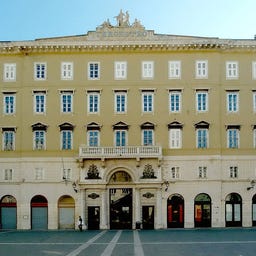
The Palazzo del Tergesteo, completed in 1842, connects the Piazza della Borsa with the Piazza Verdi and features an elegant shopping arcade on the ground floor. Designed by architect Francesco Bruyn, this building served as an important financial center for Trieste, where the writer Italo Svevo worked at the Union Bank and set parts of his novel "La coscienza di Zeno."

The impressive Grand Hotel Duchi d'Aosta stands proudly at Piazza Unità d'Italia and has a rich history that dates back to the 14th century. At this historic site, where the Hospitium Magnum and later the Locanda Grande once stood, illustrious guests like Horatio Nelson, Giacomo Casanova, and Maria Maddalena d'Austria stayed.
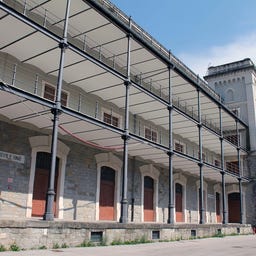
In the interactive science museum Immaginario Scientifico located in the historic Magazzino 26 of the old port of Trieste, you can experience natural phenomena up close and experiment for yourself. Founded in 1985, the museum follows the Anglo-Saxon model of modern science centers, focusing on multimedia, immersive experiences rather than traditional exhibitions.
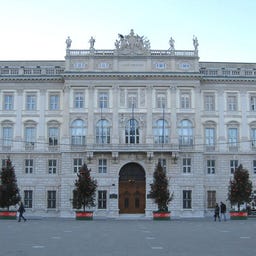
The impressive Palazzo del Lloyd Triestino at Piazza dell'Unità d'Italia was built between 1880 and 1883 based on designs by the Viennese architect Heinrich von Ferstel. Originally the headquarters of the Lloyd Triestino shipping company, the building captivates with its clear architectural style and the allegorical statues by sculptors Josef Pokorny and Hugo Haerdtl on the ground floor and at the gable.
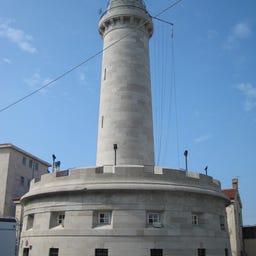
At the western end of the old harbor of Trieste stands the Lanterna di Trieste, a historic lighthouse from the 19th century built on the foundations of the former Scoglio dello Zucco. Designed by Matteo Pertsch and put into operation in 1833, the tower rests on a battlement-crowned Maximilian Fortress, which once served to defend the harbor.

In this elegant villa from the late 18th century, you will find an impressive collection from the wealthy merchant family Sartorio, who settled in Trieste in 1775.

In the magnificent Palazzo Gopcevich on the Grand Canal of Trieste, you will discover the fascinating theater and music history of the city over the last two centuries. Founded in 1924 by Carlo Schmidl, the museum houses an impressive collection of historical musical instruments, including fortepianos, harmoniums, and mechanical instruments.
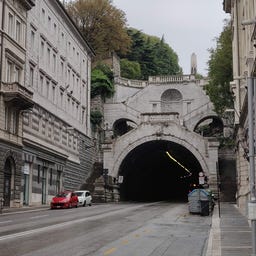
The monumental staircase Scala dei Giganti in Trieste connects Piazza Carlo Goldoni with the San Giusto district and gets its name from a local legend that says the steep steps were built for giants. What started in 1838 as a simple stone staircase was transformed in the early 20th century by architects Ruggero and Arduino Berlam into an impressive structure with two galleries.
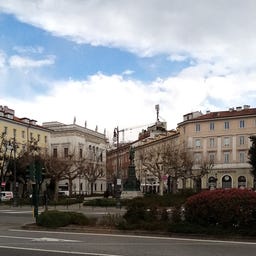
Located on the Adriatic coast, Piazza Venezia impressively connects history and the present. At the center of the square stands the magnificent bronze monument for Maximilian I of Mexico - a 9-meter tall statue that returned to its original location in 2009 after a tumultuous history.
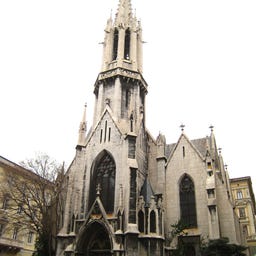
The Evangelical Lutheran Church in the heart of Trieste's Borgo Teresiano is an impressive testament to the once-thriving Protestant community of the port city. Designed by Carl Johann Christian Zimmermann, this neo-Gothic building was inaugurated in 1874 and captivates with its 50-meter-high tower and characteristic facade made of Istrian stone.
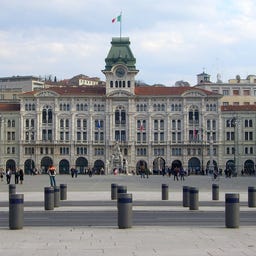
The impressive Palazzo del Municipio dominates the Piazza dell'Unità d'Italia, the largest square in Trieste, with its eclectic architecture from the late 19th century. Designed by Giuseppe Bruni between 1873 and 1875, the town hall captivates with its elaborately decorated façade featuring arcades, multi-arched windows, and a striking clock tower where two "Moors" - Micheze and Jacheze - strike the hours.
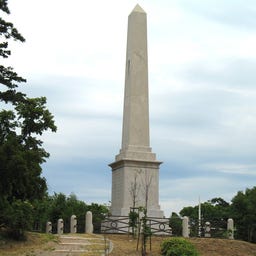
The Obelisco di Opicina stands at the beginning of the picturesque Strada Napoleonica in the eponymous district of Trieste. Designed by architect Biagio Valle in 1834, the obelisk commemorates the completion of the important road connection from Trieste to the summit of Ocre.
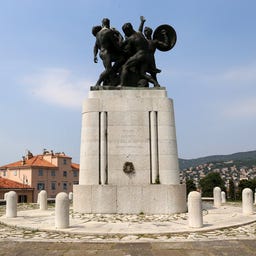
High above Trieste, on the Colle di San Giusto, stands an impressive monument dedicated to the fallen soldiers of World War I. Inaugurated in 1935 by King Vittorio Emanuele III, this monument combines the powerful sculpture of Attilio Selva with the clear architecture of Enrico Del Debbio into a 5-meter-high work of art.

At the beginning of the Canal Grande, the Palazzo Carciotti stands tall, a striking testament to Trieste's commercial boom around 1800. The Greek merchant Demetrio Carciotti had the building constructed between 1798 and 1805, and its magnificent main facade with Ionic columns and the distinctive copper dome featuring the Napoleonic eagle continue to shape the city's skyline today.
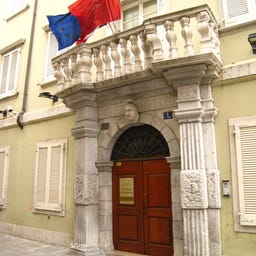
In the historic Palazzetto dei Leo in the old town of Trieste, you can embark on a fascinating journey through the artistic treasures of Asia. Opened in 2001, the museum showcases valuable collections from China, Japan, and the Gandhara region across four floors.
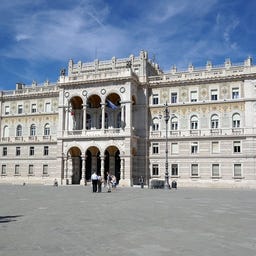
The impressive Palazzo della Luogotenenza austriaca has been dominating the Piazza dell'Unità d'Italia in Trieste with its monumental entrance since the early 20th century. The current building was constructed between 1901 and 1905 based on designs by architect Emil Artmann, replacing an older palace from the time of Maria Theresa.
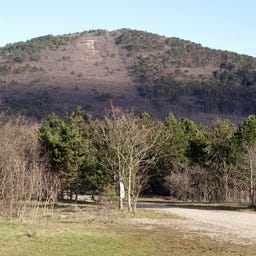
Monte Cocusso, with its prominent location on the Italian-Slovenian border, is the highest peak in the Trieste Karst. On the extensive hiking trails through black pine forests, you can discover a diverse range of flora and fauna, including rare bird species like golden eagles and owls.
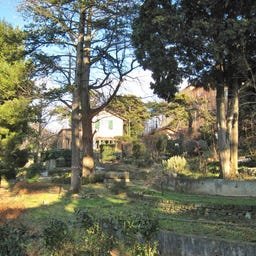
On the western slope of the Chiadino Hill in Trieste, you will find the Orto Botanico, a 10,000 square meter botanical garden with a rich history since its establishment in 1842.
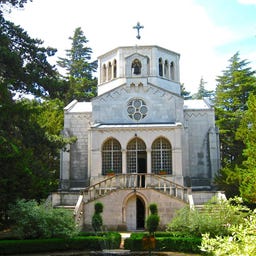
The Church of San Pasquale Baylón in Trieste is a charming Neo-Romanesque church located on the hill of Chiadino, nestled within the lush Revoltella Park. Built between 1863 and 1866, it features a Greek cross plan and a crypt housing the sarcophagi of Baron Pasquale Revoltella and his mother. The park's greenery and vibrant flowers make it a picturesque spot, often chosen for wedding ceremonies.
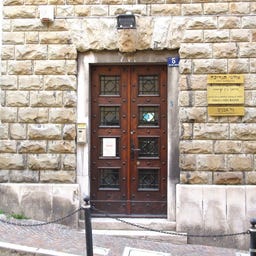
In the former Jewish hospital of Trieste, which served as a refuge for Jewish refugees during World War II, you will discover an impressive collection of Jewish culture and history. The museum, which opened in 1993, showcases valuable ritual objects, silverware, and textiles from four historic synagogues in the city after its complete renovation in 2014-2015, including exhibits that date back to 1593.
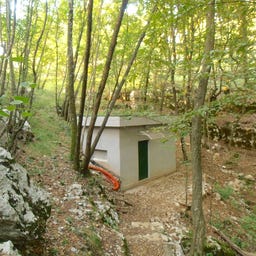
The Abisso di Trebiciano is one of the most remarkable caves in the Karst region, plunging 329 meters down to the underground river Timavo. When Anton Frederick Lindner discovered it in 1841 while searching for the course of the Timavo, it was the deepest known cave in the world for 83 years.
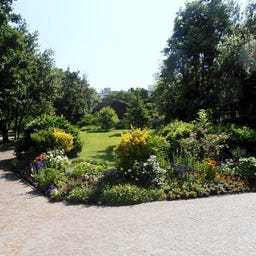
The classicist Villa Engelmann was completed in 1843 according to plans by Francesco Ponti and stands opposite the church Beata Vergine delle Grazie in the Italian city of Trieste. After Frida Engelmann acquired the property in 1888, it remained in the possession of the Engelmann family for three generations until Werner Engelmann eventually donated it to the city of Trieste.

The impressive Palazzo della Questura was built between 1940 and 1942 as the headquarters of the fascist party, after Benito Mussolini himself laid the foundation stone. The striking building made of white limestone captivates with its characteristic corner towers and a curved facade that elegantly hugs the adjacent Roman theater.
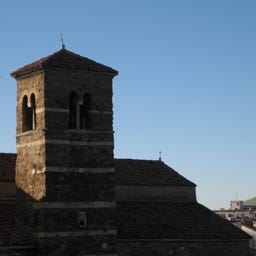
The Chiesa di San Silvestro, also known as the Basilica del Cristo Salvatore, is the oldest preserved church building in Trieste, consecrated in 1332. After a tumultuous history, including its closure by Emperor Joseph II. in 1784 and its sale to the Helvetic community, it is now jointly used by the Helvetic and Waldensian congregations.
High above the coast near Trieste stands the ruins of Castello di Moncolano, also known as the "Torre di Prosecco" - a historic site with a direct connection to the world-famous wine region. Built by the city of Trieste in the early 14th century, the fortress was used to control important trade routes and was besieged and conquered multiple times throughout its tumultuous history.
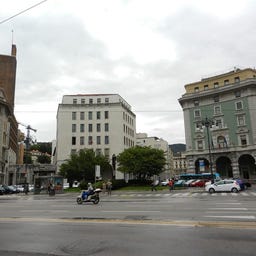
Piazza Guglielmo Oberdan is one of the most important squares in Trieste and evolved from a former military site into a central transportation hub of the city. In the 18th century, a hospital was initially built here, and later the square served the Austro-Hungarian forces - it became known for the execution of its namesake, Guglielmo Oberdan, in 1882.
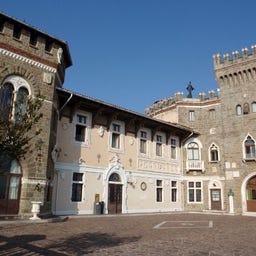
High above the Gulf of Trieste stands the Castelletto Geiringer, an impressive villa from the late 19th century, which you may also know as Villa Geiringer. The architect Eugenio Geiringer built it in 1896 as his private residence on the hill of Scorcola, and today, this distinctive structure with its central part and two side towers houses a private school.
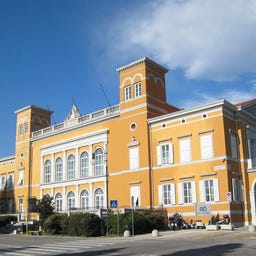
High above Trieste, the magnificent Ferdinandeo Palace stands on Chiadino Hill, built by architect Friedrich Hitzig between 1856 and 1858 in honor of Emperor Ferdinand I of Austria. On the main facade facing Via Carlo de Marchesetti, you are greeted by a monumental sculpture group featuring the allegories of Justice and Glory, along with the inscription "RECTA TUERI."
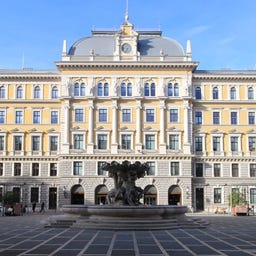
The impressive Palazzo delle Poste at Piazza Vittorio Veneto has been a defining feature of Trieste's skyline since the late 19th century. Built by Friedrich Setz between 1890 and 1894, this magnificent structure captivates with its monumental façade featuring six Ionic columns, topped by a striking dome with a clock. Spanning over 7,000 square meters, the building houses not only the local main post office but also the remarkable Museo Postale e Telegrafico della Mitteleuropa since 1997. The façade is adorned with six allegorical statues representing navigation, trade, and agriculture, reflecting Trieste's economic significance during that era.

In the heart of Trieste stands the eclectic Palazzo Rittmeyer, which the Swiss architect Eliseo de Rittmeyer built in 1823 as a family residence. After a tumultuous history—ranging from German occupation during World War II to a tragic bombing in 1944—the palace now houses the renowned Conservatorio Giuseppe Tartini.
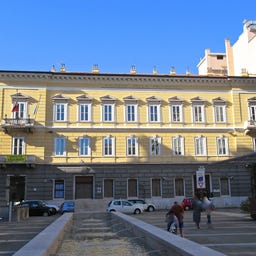
The Palazzo Galatti, designed by Carlo Cambiagio and built by Giorgio Galatti at the end of the 19th century, still shapes the cityscape in the center of Trieste today. This impressive three-story building at Piazza Vittorio Veneto served as the seat of the provincial administration for over a century, which is why it is commonly known as the "Palazzo della Provincia."
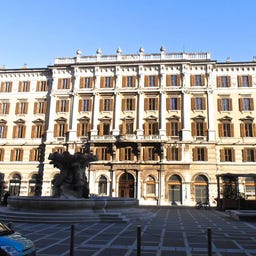
The Palazzo delle Ferrovie dello Stato, designed by architect Raimondo Sagors at the end of the 19th century, dominates the Piazza Vittorio Veneto in the center of Trieste with its impressive facade. This representative building impresses with its neoclassical architecture, featuring Ionic columns, ornate balconies, and a distinctive rusticated base.
In the Città Vecchia, the historic center of Trieste, you wander through 2000 years of history on a fascinating terrain that stretches over 60 meters in elevation from the San Giusto hill to the Adriatic Sea.
In the historic center of Trieste, you will discover Piazza della Repubblica, which was established in the 18th century under Maria Theresa of Austria as part of Borgo Teresiano. The former Piazza Nuova is lined with three impressive buildings: the eclectic Palazzo della RAS, the Palazzo del Creditanstalt, and the Palazzo Terni-Smolars, an outstanding example of Trieste's Art Nouveau style.
The Foiba di Monrupino, also known as the "Abyss of Monrupino," is a 180-meter deep karst cave located about 11 km from Trieste. The opening of the sinkhole measures 10 x 15 meters and is currently covered by a 150 m² grave slab featuring a distinctive white cross made of karst rock.
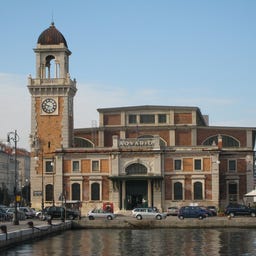
At the historic Central Fish Market in Trieste, an elegant building designed by Giorgio Polli in 1913, you can expect a fascinating glimpse into the underwater world of the Adriatic. The aquarium, which opened in 1933, features 25 tanks showcasing the typical marine fauna of the region—from small mollusks to impressive sharks and rays in the distinctive octagonal tank.
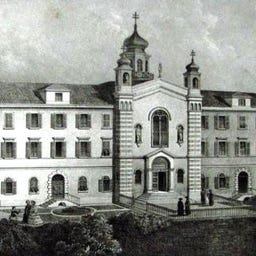
The once magnificent church of the Armenian Mechitarists in Trieste reflects the tumultuous history of this Catholic religious community, which arrived in the port city from the Venetian lagoon in the 18th century. The sacred building, consecrated in 1859, was designed by architect Giuseppe Bernardi and housed precious artworks, including a depiction of Santa Lucia donated by Pope Pius IX, created by painter Federico Overbeck. Today, you can find the dilapidated church on Via dei Giustinelli on the so-called "Armenian Hill," where the order once operated a boarding school. The church, which was formerly equipped with a Rieger organ, is now closed and in a severely neglected state.
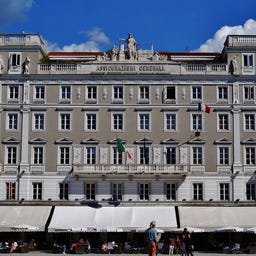
The magnificent Palazzo Stratti has been a defining feature of the Piazza dell'Unità d'Italia in Trieste since 1839, commissioned by the Greek merchant Nicolò Stratti. Designed in a neoclassical style by Antonio Buttazzoni, the palace impresses with its symmetrical façade, valuable bas-reliefs by Antonio Canova, and an imposing group of sculptures that crowns Trieste with allegories of progress. On the ground floor, you will find the historic Caffè degli Specchi, while the upper floors have belonged to the insurance company Assicurazioni Generali since 1846. The building's current appearance is the result of significant renovations in the late 19th century, during which Eugenio Geiringer and Giovanni Righetti redesigned the main façade.
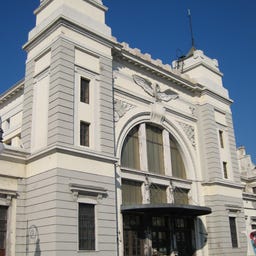
In the former Campo Marzio train station from the early 20th century, you’ll discover one of the few Italian museums dedicated solely to railway history. The magnificent building designed in Art Nouveau style by architect Robert Seelig has housed an impressive collection of historical locomotives since 1984, including a German armored train from World War II.
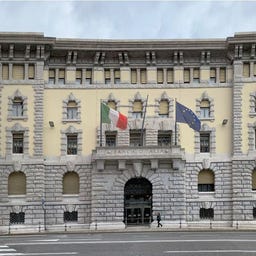
In the impressive Palazzo of the Banca d'Italia at Corso Cavour 13, neo-Renaissance architecture meets Art Deco, creating a striking testament to Trieste's tumultuous history. Originally built in 1902 by Eugenio Geiringer as an Austro-Hungarian bank, the building was expanded between 1922 and 1928 under Arduino Berlam, acquiring its distinctive robust design with local marble columns and intricate wooden ceilings.
At the Teatro Stabile Sloveno in Trieste, you will find the only public theater in Italy that performs exclusively in Slovenian. Founded in 1902 as Dramatično drušvo, this institution survived the destruction of its original building by fascists in 1920 and has continued its work despite opposition to this day. Since 2000, all performances are also shown with Italian subtitles, creating a cultural bridge between the Slovenian minority and the Italian audience. As the most significant cultural institution of the Slovenian minority in Italy, the theater was awarded the Gold Medal of the Order of Freedom of the Republic of Slovenia in 2004.
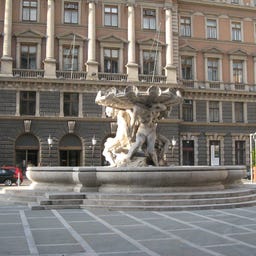
In the impressive Palazzo delle Poste, a neo-Renaissance building from the late 19th century in the heart of Trieste, you discover the fascinating history of postal services and telegraphy in Central Europe. The museum, which opened in 1997, impresses with its monumental staircases, arcades, and a light-filled glass roof, while authentic replicas of a historical post office and a field post office bring the past to life.
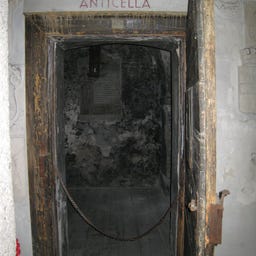
In this historic museum, built between 1931 and 1935 on the grounds of an 18th-century Austrian barracks, you will experience the moving history of the Italian Risorgimento, from the uprisings of 1848 to World War I. The centerpiece is the memorial shrine for Guglielmo Oberdan, who was executed here in 1882 after a failed assassination attempt on Emperor Franz Joseph I. - his original prison cell has been preserved to this day. A prominent tower with the Italian flag characterizes the museum complex, while inside, original uniforms, photographs, and personal items of local Garibaldians, as well as historical editions of the newspaper "La Favilla" from 1848, make the history tangible.
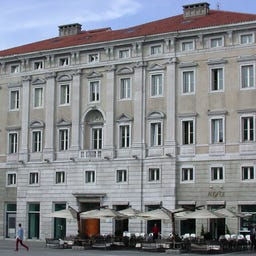
The oldest palace at Piazza dell'Unità d'Italia combines late Baroque and Rococo elements into an impressive façade with Ionic columns and varying window gables. Commissioned in 1780 by Domenico Plenario, the building housed the Società di Minerva on the ground floor starting in 1810, which focused on promoting art and culture in Trieste. Later, the legendary Caffè Flora moved in, becoming a popular meeting place for the singers of the nearby Teatro Verdi. The five-story building, which has been named after its then-owner Leopoldo Pitteri since 1834, underwent extensive renovations in 1982, while the original 18th-century façade was preserved.
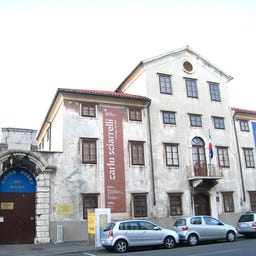
The "Museum of the Sea" is a historic museum in Trieste founded in 1904. Inside, it houses a vast collection of documents and objects that tell the story of the port and maritime activities of the city of Trieste.
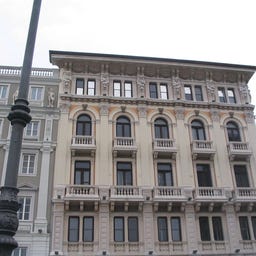
In the magnificent Piazza dell'Unità d'Italia in Trieste stands the elegant Palazzo Modello, which was built between 1871 and 1872 on the site of a medieval chapel. With its three richly decorated facades and four floors, the building combines various architectural styles, particularly noticeable are the balconies with volute consoles and the sculpted telamons on the top floor.

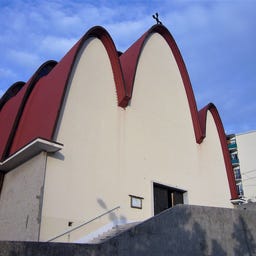
The "Church of San Luigi Gonzaga" is the parish church of San Luigi, a district of Trieste.

The "Palazzo Economo" is a 19th-century palace in Trieste, in the Italian region of Friuli-Venezia Giulia. The building located at "Piazza della Libertà 7" currently houses the regional Ministry of Culture.
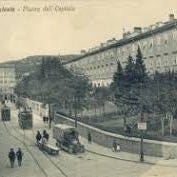
"Piazza dell'Ospitale," mistakenly also referred to as "Piazza dell'Ospedale," is one of the squares in Trieste, in Friuli-Venezia Giulia.
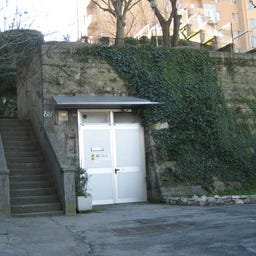
In the Speleovivarium, a unique cave museum in Trieste, you can look forward to a fascinating encounter with the olm (Proteus anguinus) - Europe's only true cave vertebrate. The museum, operated by the Società Adriatica di Speleologia, features a special cave climate and offers you an authentic insight into the bio-speleology of the Karst region.
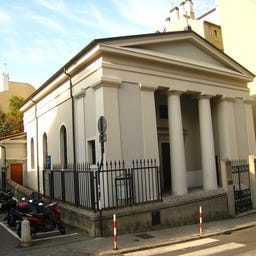
The "Anglican temple" or "Anglican church" is a place of worship located in Trieste, on San Michele Street.
The "Basovizza Valley" is a karst cavity formed by the erosion of limestone rocks by atmospheric agents. Its depth is about 6 meters and it is located in Basovizza, a municipality in the province of Trieste, on the Carso plateau. Due to some alleged similarities with archaeological sites in Bosnia and Herzegovina related to the heresy of the Bogomils, the Basovizza Valley is also referred to as the "Bogomil Valley."

The impressive Palazzo di Giustizia in Trieste has housed the city's main judicial institutions under one roof since 1929. Planned during the Austro-Hungarian rule and built between 1912 and 1929, the building captivates with its magnificent main facade featuring white columns and six monumental statues of Roman jurists on the terrace.
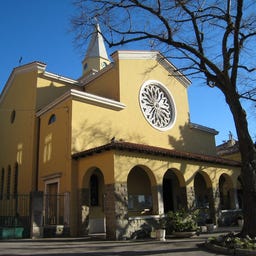
The "Church of San Bartolomeo Apostolo" is the parish church of Barcola, a district of Trieste, in the province and diocese of Trieste; it is part of the Roiano deanery.
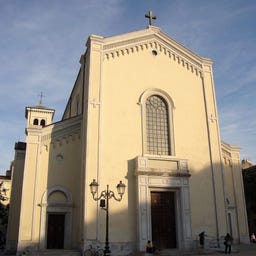
The "Church of St. James the Apostle" is the parish church of San Giacomo, a neighborhood in Trieste, in the province and diocese of Trieste; it is the seat of the homonymous deanery.
The "Grotta Nera" is located in the province of Trieste, in a small depression situated in the experimental plot of the Bosco Bazzoni in Basovizza, on the Trieste Karst, and is identified by the number 43 in the cave registry of Venezia Giulia. It owes its name to having been used for the clearance of war remnants, the explosion of which blackened the walls of the cave.
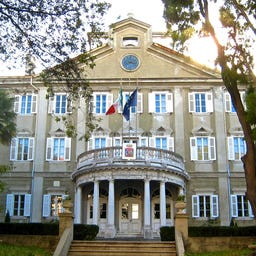
In the elegant Villa Necker, a neoclassical city palace from the late 18th century, the tumultuous history of Trieste is reflected. This impressive three-story building, with its semi-circular columned portico and distinctive clock tympanum, was once home to Gerolamo Bonaparte, Napoleon's brother, before it was acquired by the Necker family in 1827.
The "Villa Sigmundt," also known as "Villa Stern" or "Villa Ferro," is a 19th-century country house in Trieste, in the Italian region of Friuli-Venezia Giulia. It is located at "Via Rossetti 44–46."

The Piazza Vittorio Veneto in the historic Borgo Teresiano district of Trieste has a rich history dating back to the 18th century. In the center of the rectangular square, you can admire the magnificent Fontana dei Tritoni from 1898, where Tritons and Nereids made of Aurisina marble gracefully support a shell-shaped basin.
